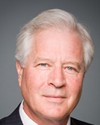Thank you, Mr. Chair.
Thank you for the invitation to come here today. Let me, if I may, offer my congratulations on your chairmanship.
With me today, as indicated, are Susan Cartwright, who is leading the legislative review of the Public Service Modernization Act as the senior adviser to the Privy Council Office, and Mr. Ross MacLeod, the assistant deputy minister of.... I won't read the long title, but he is responsible for all the planning and policy issues with regard to human resources in the office of the CHRO within Treasury Board Secretariat.
We are pleased to be here today to talk to you about the modernization of human resources management in the federal government, which is vital to ensuring a high-performing public service. I would like to thank the Auditor General for her chapter on the implementation of the Public Service Modernization Act.
This chapter, as Ms. Fraser said, includes two recommendations. The first is directed to the Treasury Board Secretariat, while the second directly touches the work my colleague Susan Cartwright has been doing with her team to lead the legislative review of the PSMA.
The recommendation for the secretariat calls on us to provide more timely information to Parliament, and to report on whether the changes to human resources management have achieved the results intended by the PSMA. We agree, as Ms. Fraser said in the report, and we welcome the Auditor General's advice in this regard. We recognize that while the PSMA has been fully implemented, there is still work to be done in a few areas and room for improvement.
This includes our reporting to Parliament on human resources issues. While we have experienced some delays, we are confident that we have the matter in hand and future reports will be more timely.
I would note that the governance landscape for people management continues to evolve and that our approach to measurement and benchmarking is maturing. That said, I'm pleased with the continuous progress we have made in assessing the state of human resources management across the government.
Two of our most important assessment tools in this regard are the Treasury Board Secretariat's management accountability framework and the Public Service Commission's staffing management accountability framework.
The management accountability framework for the secretariat sets out the expectations of senior public service managers for good public service management. It is structured around nine key elements that collectively define management and it assesses departments in several areas of human resources, such as employee engagement, leadership, employment equity, learning, development, performance management, integrated human resources and business planning, staffing, and official languages. It also allows for discussion around the departmental context in which the human resources management operates.
As the MAF—as we call it—assessment process is undertaken once a year, we have also recently introduced a people management dashboard that allows deputy heads, human resources practitioners, and managers to track online their organization's performance throughout the year and set targets for improvement across a range of measures.
This dashboard we introduced only this year. It provides vital data on people management trends and issues, and it allows me as a deputy head to focus on key areas for improvement and to engage managers. I can track my progress over the year and then once a year assess my overall situation.
For its part, the Staffing Management Accountability Framework helps the Public Service Commission to review and evaluate staffing performance and to provide feedback to delegated public service organizations. It sets out key areas for a well-managed appointment system that achieves progress in making the staffing process more flexible and efficient, and strengthens respect for the appointment values involved.
Both these tools—the Management Accountability Framework and the Staffing Management Accountability Framework—are now well integrated into the public service and are used to measure progress in achieving PSMA objectives. That said, our people management environment is constantly evolving and the areas we assess are far from static.
In the almost five years since the coming into force of the PSEA, in addition to changes to HR governance, our operating context has evolved considerably, shaped by the recent financial-economic issues or crisis, the arrival of a new generation of public servants, the growing diversity of our workforce, and the growing impact of technology on how we work. For example, in 2009 alone we saw the introduction of the Expenditure Restraint Act, the Public Sector Equitable Compensation Act, and the creation of the Office of the Chief Human Resources Officer in the Treasury Board Secretariat. Those are three major initiatives in a single year.
I see that my time is up. Therefore, I will skip over the rest of my presentation and tell you that the federal public service is a highly complex organization. It is the biggest employer in Canada. We function in a constantly changing environment. We take ad hoc measures and periodical measures to ensure its growth within the frameworks and obligations of the Public Service Modernization Act.
Now I will give the floor to my colleague.
I would ask my colleague Susan Cartwright to give you a perspective of the legislative review that is currently under way.










